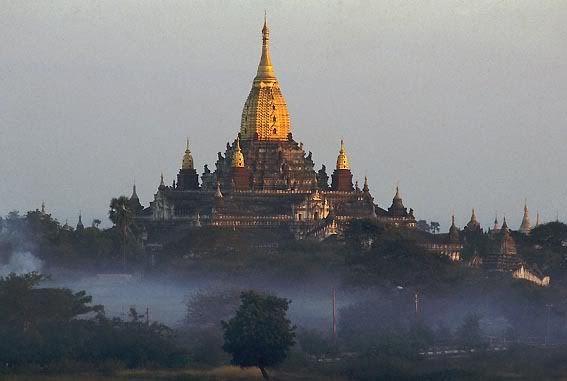Whooey — the intertubes really have changed things.
This week Jon Swift is a guest blogger at mike’s round-up at Crooks & Liars and I’m already impressed with yesterday and today’s posts.
Swift says:
Something seems to be happening in Burma or Myanmar or whatever, but it must not be very important because hardly anyone is blogging about it.
Never let it be said that DocuDharma shall let this challenge go unanswered!
Jon links to comments from left field which in turn links to the front paged New York Times story on what’s going on in Burma:
Myanmar’s military government has sealed off the country to foreign journalists but information about the protests has been increasingly flowing out through news reports, exile groups in Thailand with contacts inside Myanmar, and through the photographs, videos and audio files, carried rapidly by technologies, including the Internet, that the government has failed to squelch.
…
Mrs. Aung San Suu Kyi, the daughter of an assassinated independence hero, Aung San, came to prominence when she became a leader in the pro-democracy demonstrations of 1988.
Her political party, the National League for Democracy, won a landslide victory in Parliamentary elections in 1990, although the junta, fearing her charismatic appeal, had already placed her under house arrest.
The military government annulled the result of the 1990 elections and held on to power. But it miscalculated the public mood again in 2002 when it released her from house arrest and allowed her to tour the country, visiting party offices.
She drew increasingly large and enthusiastic crowds until a band of government-backed thugs attacked a convoy in which she was traveling, killing several people. The government seized her again and placed under even stricter house arrest, cutting off her telephone and deepening her isolation.
The latest protests began Aug. 19 in response to sharp, unannounced fuel price increases of up to 500 percent, immediately raising the prices of goods and transportation.
They were led at first by former student protesters and other activists, but most of these leaders had been arrested or were in hiding when the monks began their protests last Tuesday.
The monks were apparently motivated at first by an attack on a small demonstration at which security officers fired shots into the air and beat a number of monks.
Since then, the monks’ protests have spread from city to city and have become more overtly political.
Please click the link in Jon’s quote to see an amazing video from Mrs. Aung San Suu Kyi on non-violent protest. It is quite astonishing — and so is she.



